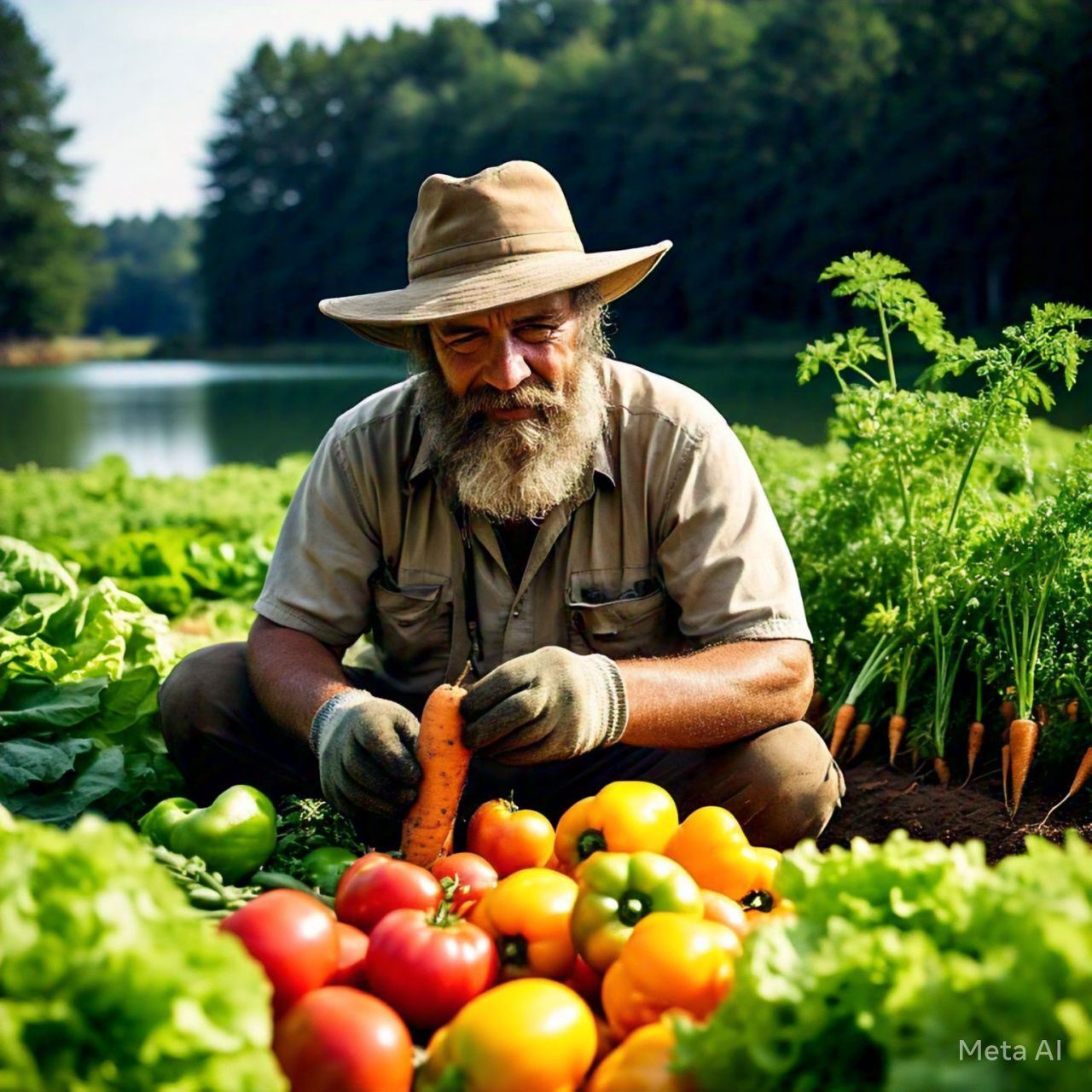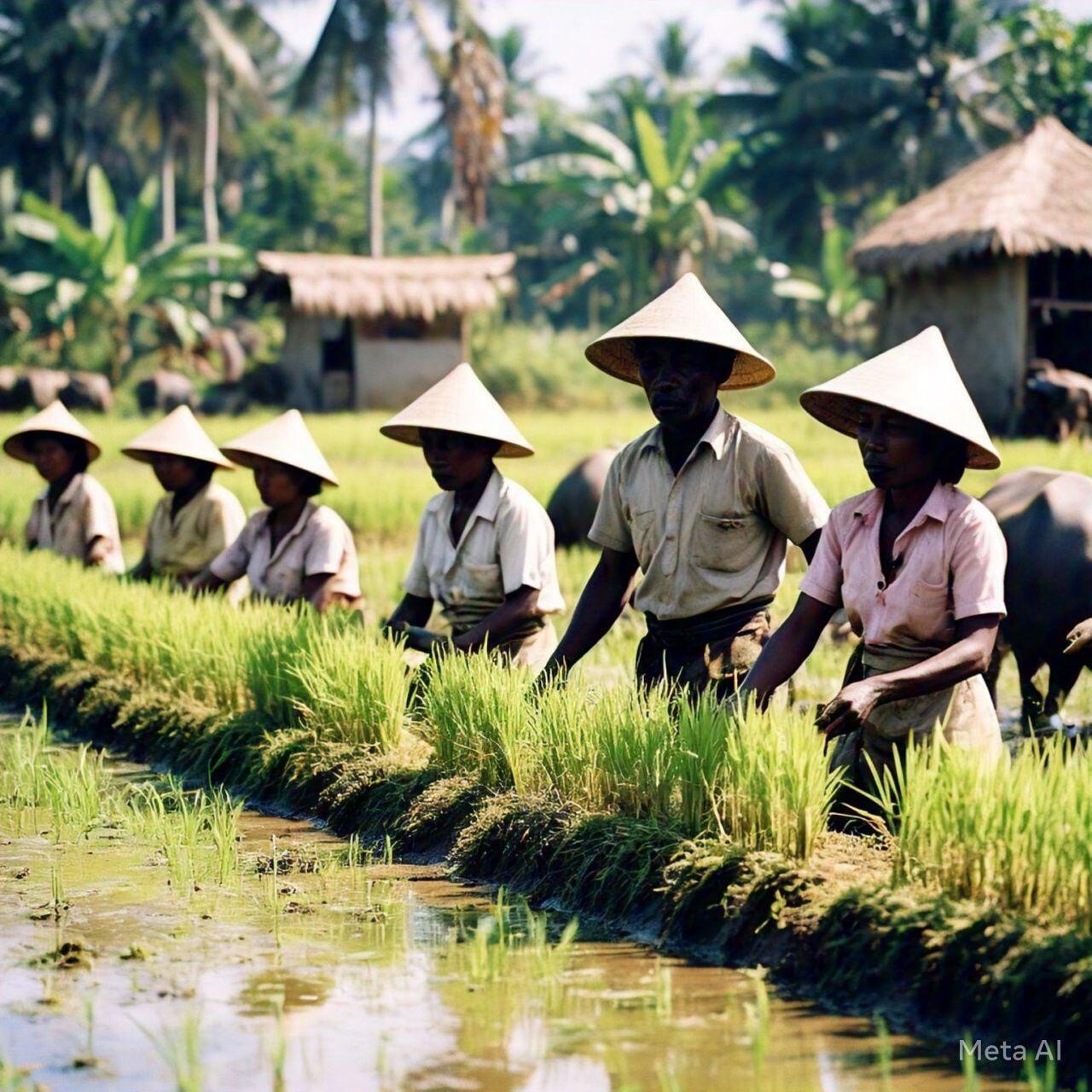Defining the Agricultural SME Business Model
Defining the Agricultural SME Business Model
The Agricultural SME Business Model encompasses small and medium-sized enterprises involved in cultivating, farming, and producing goods derived from fresh produce and livestock.
This Business Model encompasses a diverse range of business activities that includes the cultivating of crops, raising of livestock, to processing production, distribution and marketing of agricultural goods.
This model is also pivotal in enhancing local food production, providing employment, and contributing to economic growth. Agricultural SMEs vary widely, including organic farming SMEs, aquaculture SMEs, dairy product SMEs, specialty crop SMEs, and more.
These enterprises may focus solely on cultivation or extend their operations to include packaging and distribution, thereby integrating multiple stages of the agricultural value chain.
Some key characteristics include:
Dependence on Natural Resources – Agricultural production relies heavily on natural resources such as land, water, and sunlight.
Seasonal Fluctuations – Production and revenue can be subject to seasonal variations due to weather patterns and crop cycles.
Market Fluctuations – Market prices for agricultural commodities can fluctuate significantly, impacting profitability.
Sustainability – Sustainable farming practices are increasingly important, including minimizing environmental impact and conserving natural resources.
Some of the common SMEs in this business model are:
Crop Production:
1. Organic vegetable farming
2. Fruit orchards (apples, citrus, berries)
3. Specialty crop production (e.g., herbs, medicinal plants)
4. Grain farming (wheat, corn, soybeans)
Livestock Farming:
1. Dairy farming (milk, cheese, yogurt)
2. Beef cattle farming
3. Poultry farming (chickens, turkeys)
4. Sheep and goat farming
5. Aquaculture: Fish farming, shrimp farming, oyster farming
Agricultural Processing:
1. Wine production
2. Cheesemaking
3. Meat processing
4. Fruit and vegetable canning/preserving
Value-Added Products:
1. Organic food production
2. Craft beverages (beer, wine, cider)
3. Essential oils and herbal products
Entry Level Expertise Requirements
Entry Level Expertise Requirements
Starting an agricultural SME requires a foundational understanding of farming practices, crop management, and livestock care. While formal education in agriculture can be beneficial, practical experience is often crucial.
Entrepreneurs should also be familiar with business management principles, financial planning, and market analysis to ensure their venture’s sustainability.
Some examples of crucial expertise requirements are:
Agricultural Knowledge – A strong understanding of agricultural principles, including soil science, plant biology, animal husbandry, and crop management.
Practical Skills – Practical experience in farming, animal husbandry, or agricultural production.
Business Acumen – Strong business skills, including financial management, marketing, and sales.
Adaptability and Resilience – The ability to adapt to changing weather conditions, market fluctuations, and unforeseen challenges.
Specific expertise in organic farming, aquaculture, or specialty crops can offer a competitive edge.

Standard Regulations Applicable
Standard Regulations Applicable
Agricultural SMEs must comply with various regulations, including food safety standards, environmental laws, and labour laws. These regulations ensure the quality of products and the safety of operations.
Compliance with organic certification standards, animal welfare regulations, and pesticide usage guidelines is essential for SMEs in specialized sectors like organic farming and livestock breeding.
Some examples of the regulations and compliance applicable are:
Agricultural Regulations – Compliance with agricultural regulations related to land use, pesticide use, and animal welfare.
Environmental Regulations – Adhering to environmental regulations to protect soil, water, and air quality.
Food Safety Regulations – Ensuring the safety and quality of food products through adherence to food safety regulations.
Labor Laws – Compliance with labour laws and regulations related to employee safety and working conditions.
Adhering to these regulations not only ensures legal operation but also builds consumer trust.

Policies, Processes, and Procedures Framework requirements
Policies, Processes, and Procedures Framework requirements
Establishing a robust framework of policies, processes, and procedures is essential for the smooth operation of an agricultural SME.
This framework should cover areas such as crop rotation schedules, livestock feeding routines, pest control measures, and quality assurance processes.
Some examples of the processes and procedures required are:
Farm Management Plans – Developing and implementing farm management plans to optimize production, minimize environmental impact, and ensure sustainability.
Quality Control Procedures – Implementing quality control measures to ensure the quality and safety of agricultural products.
Inventory Management – Managing inventory of livestock, feed, and other inputs effectively.
Marketing and Sales Strategies – Developing and implementing effective marketing and sales strategies to reach target markets.
Technology and Automation requirements
Technology and Automation requirements
Technology adoption is critical for improving efficiency and productivity in agricultural SMEs.
From automated irrigation systems and drone monitoring for crop health to data analytics for yield prediction, technology can transform traditional farming practices.
Some examples of technologies being deployed include:
Precision Agriculture – Utilizing technologies such as GPS, drones, and sensors to optimize irrigation, fertilization, and pest control.
Automation Technologies – Implementing automation technologies in areas such as feeding, milking, and harvesting.
Data Analytics – Utilizing data analytics to monitor crop yields, track production costs, and identify areas for improvement.
E-commerce – Utilizing e-commerce platforms to sell products directly to consumers.
SMEs should invest in scalable technology solutions that suit their size and budget. Embracing digital tools for record-keeping, inventory management, and online marketing can further enhance operational efficiency.
Key Roles and Responsibilities (People) requirements
Key Roles and Responsibilities (People) requirements
Successful agricultural SMEs require a well-structured team with clearly defined roles. Key roles include farm managers, agricultural technicians, quality control specialists, and marketing professionals. Each team member should possess relevant expertise and a commitment to sustainable farming practices. Leadership roles, such as the farm owner or CEO, should focus on strategic planning, financial management, and business development.
Some of these key roles and responsibilities are:
Farmers – Overseeing all aspects of farm operations, including planting, harvesting, and animal husbandry.
Farm Workers – Performing tasks such as planting, weeding, harvesting, and animal care.
Agricultural Technicians – Providing technical expertise in areas such as soil testing, pest control, and irrigation.
Marketing and Sales Personnel – Marketing and selling agricultural products.

Overall Costs and funding requirements
The initial costs of setting up an agricultural SME can be significant, covering land acquisition or leasing, equipment purchase, seed or livestock procurement, and initial labour costs.
Funding options include personal savings, bank loans, government grants, and crowdfunding. Agri-SME financing options are often tailored to support sustainable practices, innovation, and capacity building.
Some of the common costs are:
Land Costs – Acquiring or leasing land for agricultural production.
Equipment Costs – Investing in farm equipment, such as tractors, harvesters, and irrigation systems.
Input Costs – Costs associated with seeds, fertilizers, pesticides, feed, and other inputs.
Labor Costs – Wages for farm workers and other employees.
Developing a comprehensive business plan can help secure the necessary funding and ensure financial sustainability.

Benefits of the Agricultural SME Business Model
Benefits of the Agricultural SME Business Model
Agricultural SMEs offer numerous benefits, including contributing to local food security, fostering rural development, and promoting sustainable agricultural practices.
These enterprises can adapt quickly to market changes, offer niche products, and build strong community ties. The flexibility of the SME model allows for innovation and diversification, which can lead to increased resilience against economic fluctuations.
Some of the common benefits are:
Contribution to Food Security – Producing food to meet local and regional food needs.
Environmental Stewardship – Promoting sustainable farming practices and protecting natural resources.
Rural Development – Supporting rural communities and creating employment opportunities.
Innovation and Entrepreneurship – Opportunities for innovation and entrepreneurship in areas such as agribusiness, food processing, and sustainable agriculture.

Challenges of the Agricultural SME Business Model
Challenges of the Agricultural SME Business Model
Despite their potential, agricultural SMEs face several challenges, such as limited access to capital, fluctuating market prices, and vulnerability to climate change.
Regulatory compliance can be burdensome, particularly for small enterprises with limited resources. Additionally, finding and retaining skilled labour can be challenging in rural areas.
Some of the challenges are:
Weather Dependence – Vulnerability to weather-related risks such as droughts, floods, and extreme temperatures.
Market Fluctuations – Fluctuations in commodity prices and market demand can significantly impact profitability.
Competition – Competition from large-scale agricultural producers.
Labor Shortages – Difficulty in finding and retaining skilled agricultural workers.
Environmental Challenges – Addressing environmental challenges such as climate change, soil erosion, and water scarcity.
Future Prospects of the Agricultural SME Business Model
Future Prospects of the Agricultural SME Business Model
The future of agricultural SMEs looks promising, driven by increasing demand for locally produced, sustainable, and organic products.
The future success of the business model, however, lies in sustainable and innovative practices.
By embracing technologies such as precision agriculture, adopting sustainable farming practices, and developing value-added products, agricultural SMEs can enhance their competitiveness, improve profitability, and contribute to a more sustainable and resilient food system.
Technological advancements, such as digital marketplaces, offer new opportunities for growth and efficiency. Sustainable agriculture practices are gaining traction, supported by consumer preferences and government incentives.
As the industry evolves, agricultural SMEs that embrace innovation and sustainability will be well-positioned to thrive.
By understanding and leveraging the unique aspects of the Agricultural SME Business Model, entrepreneurs can build resilient, profitable businesses that contribute to the agricultural sector's growth and sustainability.
By addressing the challenges and capitalizing on the opportunities presented by these advancements, agricultural SMEs can play a vital role in ensuring food security, promoting economic growth, and protecting the environment.


